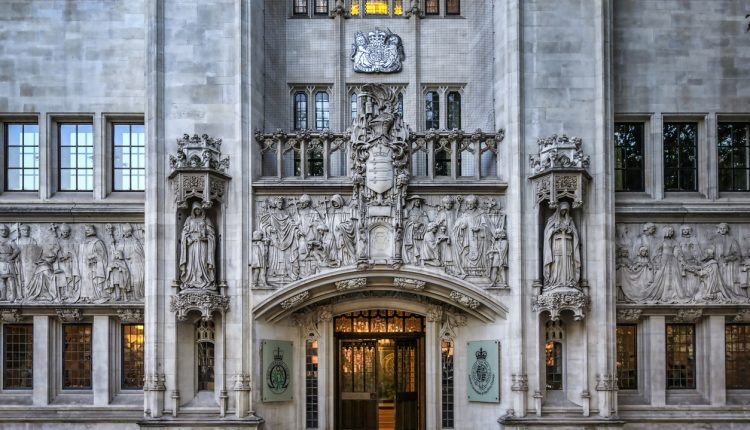High Court Confirms That the Role of the Courts Is Not to “Discover, Uncover, Or Declare ‘The Truth’”
The recent High Court judgment in Graham Frederick John Auliffe and ors v Susan Ellis [2019] EWHC 1427 (QB) clarified that the role of the court in disputes is not to simply determine the truth but “to identify what needs to be proved, by whom, upon the basis of a correct identification and analysis of the legal rules governing the case; and then to form a judgment”.
Here Matt Peacock, associate and commercial litigation specialist at Signature Litigation comments on the case and the judgement, including the details surrounding.
The reality of practising in any given field is that the concepts and assumptions fundamental to it become crystallised in the mind of a practitioner over time to the point they are often no longer recognised by them. Yet to outsiders of the field, those very same concepts can appear to be the antithesis of it.
The recent decision of Baker J in Graham Frederick John Auliffe and ors v Susan Ellis [2019] EWHC 1427 (QB) highlights one such disconnect: that between the public’s perception of the role of the Courts in our justice system as declarator of ‘the truth’ in any given dispute, which is considered by many clients to be the primary reason for enduring litigation, and the practitioner’s view of the Court as being an arbitrator, albeit an often proactive one, of the evidence available to it on any given point or points in that dispute.
Tucked within Baker J’s decision, which gives a further vivid reminder of the Court’s reticence to re-open findings of fact on an appeal, is some interesting commentary on the point.
The case concerned a dispute over whether a lease of farmland had been validly terminated by a time-sensitive notice, failing which the lease continued (potentially in perpetuity). Central to the issue on appeal was the evidential question as to whether a notice to quit had been received by the Defendants, it not being in dispute that it had been sent. At trial, the parties had given conflicting evidence in this regard and the trial judge had formed a clear view that the Claimant’s evidence was to be preferred; the notice had been received and as such the lease had been determined in accordance with that notice. The Defendants appealed that finding.
The High Court’s judgment on appeal offers insightful guidance as to the approach taken by the Court when establishing facts, and the very notion of searching for ‘the truth’ in litigation. Dismissing the appeal, Baker J confirmed the Court’s role is limited to correctly identifying the legal principles governing any given case and then applying the evidence that is available to it atop that analysis. He stated at paragraph 26:
“It is also pertinent to bear in mind throughout that under our adversarial trial system, the task of the judge on disputed matters of fact is not, as such, to determine the truth … It is to identify what needs to be proved, by whom, upon the basis of a correct identification and analysis of the legal rules governing the case; and then to form a judgment (doing so rationally, reasonably and impartially), for each such proposition of fact, as to whether the evidence presented at trial made what the party bearing the burden of proof says occurred appear – more probably than not – to be what occurred.”
He continued: “The purpose of the court being to provide and manage a fair pre-trial process … to conduct a fair trial, then to provide, upon the basis of that trial, an impartial, reasoned determination of the dispute on the basis of the cases presented at trial following that process, and not, as such, to discover, uncover, or declare ‘the truth’.”
What, then, is the purpose of trial, and all that comes with it, if not to ascertain ‘the truth’?
Ultimately, this decision highlights that the function of the Court is to adjudicate any given dispute before it in accordance with the framework of the law and procedure laid out for it, including in accordance with the rules of evidence. It is, in the words of Baker J above, to “to identify what needs to be proved, by whom, upon the basis of a correct identification and analysis of the legal rules governing the case; and then to form a judgment”. Whether the Court’s assessment on balance of probabilities in that regard leads to ‘the truth’ is a separate (and, from the practitioner’s standpoint, somewhat irrelevant) concern.
To most commercial litigators this decision will come as no surprise. For example, it is long accepted that privilege can be a bar to the Court’s discovery of ‘the truth’ – see R v Derby Magistrates Court ex parte B [1996] 1 AC 487 – What we should perhaps all continue reminding ourselves is that to many clients, the spirit of the decision certainly will. It is therefore incumbent upon legal practitioners to ensure that clients understand what to expect from the process.
As to the case at hand? Baker J decided not to interfere with the trial judge’s conclusion on the Defendant’s factual case that none of eight separate items of post sent by the Claimant’s solicitor by both first class and registered post had arrived as being a defence that “was not merely unpersuasive…It was untrue.”




